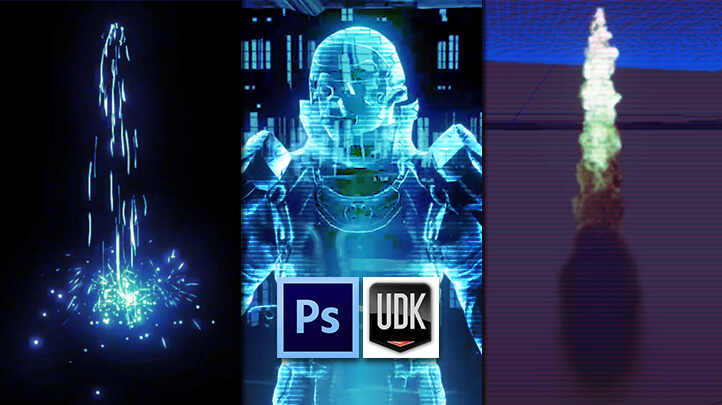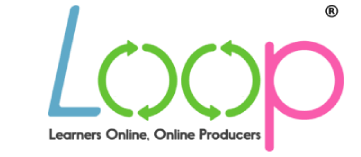OUR COURSES
Mastering Digital Design - An Introduction to Visual FX for Games with UDK

Duration 12 hr 59 mins
Languages en_US
Course Description
This course is intended for those with a more comfortable understanding of the Unreal Engine who have an interest in creating Particle FX or Visual FX. In this course, we take you through the process of setting up a complex particle system that warps a character in through a teleportation device, as well as an amazing look at "phasing" the character in to view! We'll look at creating the holographic projections you see in the scene, adding texture and distortion to the sequence, and then wrap up the series with an in-depth look at setting up a basic render and animating the camera and lights so that you can make your very own cut-scenes and cinematics!Learn tips and tricks of creating dynamic animation and games design.
- Know about the different branches in animation
- Learn about what goes into making a successful animation
- Understand better about the designing process with this course
- Be able to create your own monsters and creatures at the end of this course
Course Objectives
1. Learn advanced technique with Unreal Cascade and Material Editor2. Know more about the basics of particles in UDK
3. Learn how to avoid common errors and workflow mistakes
4. Know the process of a complex particle system setup
5. Learn about creating holographic projection scenes
6. Be able to set up a basic render and animating the camera and lights
Content
Chapter 1 - Introduction (03:16)
Chapter 2 - Creating the Material
Chapter 3 - Direction of the Sparks
Chapter 4 - Adding Bend to the Sparks
Chapter 5 - Adding Ground Collision
Chapter 6 - Ember Balls and Popping Sparks
Resource Files
Chapter 2 - Creating the Material
Chapter 3 - Direction of the Sparks
Chapter 4 - Adding Bend to the Sparks
Chapter 5 - Adding Ground Collision
Chapter 6 - Ember Balls and Popping Sparks
Resource Files
Chapter 1 - Introduction (05:14)
Chapter 2 - Cascade Interface 1
Chapter 3 - Cascade Interface 2
Chapter 4 - FX Core Modules
Chapter 5 - Color Values
Chapter 6 - Particle Locations
Chapter 7 - Multiplier Modules
Chapter 8 - Sample Effect
Resource Files
Chapter 2 - Cascade Interface 1
Chapter 3 - Cascade Interface 2
Chapter 4 - FX Core Modules
Chapter 5 - Color Values
Chapter 6 - Particle Locations
Chapter 7 - Multiplier Modules
Chapter 8 - Sample Effect
Resource Files
Chapter 1 - Introduction (01:36)
Chapter 2 - Health Pickup Mesh
Chapter 3 - Setting up the FX
Chapter 4 - Creating a Smoke Base
Chapter 5 - Adding a Light Ray
Chapter 6 - Testing the pickup ingame
Chapter 7 - Adding Light
Chapter 8 - Principles of Flipbooks
Chapter 9 - Rocket Trail FX
Chapter 10 - Basic Fire FX
Chapter 11 - Lightning Ball Textures
Chapter 12 - Lightning Ball FX
Chapter 13 - Flipbooks - Bonus Pt 1
Chapter 14 - Flipbooks - Bonus Pt 2
Chapter 2 - Health Pickup Mesh
Chapter 3 - Setting up the FX
Chapter 4 - Creating a Smoke Base
Chapter 5 - Adding a Light Ray
Chapter 6 - Testing the pickup ingame
Chapter 7 - Adding Light
Chapter 8 - Principles of Flipbooks
Chapter 9 - Rocket Trail FX
Chapter 10 - Basic Fire FX
Chapter 11 - Lightning Ball Textures
Chapter 12 - Lightning Ball FX
Chapter 13 - Flipbooks - Bonus Pt 1
Chapter 14 - Flipbooks - Bonus Pt 2
Chapter 1 - Introduction (01:57)
Chapter 2 - Intro to the Orbit Module
Chapter 3 - Orbit Module Sample
Chapter 4 - Creating a Vortex
Chapter 5 - Creating Fireflies and Sparkles
Chapter 6 - Creating an Evil Spore
Chapter 7 - Introduction to Ribbons
Chapter 8 - Creating the Ribbon Material
Chapter 9 - Overlay Materials for the Ribbon
Chapter 10 - Tweak Color Over Life
Chapter 11 - Adding Emissive to the Blade
Chapter 12 - Adding FX to the Blade
Chapter 13 - Fill Rate and Overdraw
Chapter 14 - Seeding Modules
Chapter 15 - LODs (04:33)
Chapter 16 - Bounds and Series Wrapup
Chapter 2 - Intro to the Orbit Module
Chapter 3 - Orbit Module Sample
Chapter 4 - Creating a Vortex
Chapter 5 - Creating Fireflies and Sparkles
Chapter 6 - Creating an Evil Spore
Chapter 7 - Introduction to Ribbons
Chapter 8 - Creating the Ribbon Material
Chapter 9 - Overlay Materials for the Ribbon
Chapter 10 - Tweak Color Over Life
Chapter 11 - Adding Emissive to the Blade
Chapter 12 - Adding FX to the Blade
Chapter 13 - Fill Rate and Overdraw
Chapter 14 - Seeding Modules
Chapter 15 - LODs (04:33)
Chapter 16 - Bounds and Series Wrapup
Chapter 1 - Introduction to the Series
Chapter 2 - Key Concepts Matinee
Chapter 3 - Floating Dust Particles
Chapter 4 - Projector Rays
Chapter 5 - Projector Rays Material
Chapter 6 - Projector Rays Cascade Implementation
Chapter 7 - Tech Material
Chapter 8 - Background Tech Rings
Chapter 9 - Holographic Startup Projections
Chapter 10 - Key Concepts Screen Position
Chapter 11 - Icosahedron Material
Chapter 12 - Icosahedron Particle Elements
Chapter 13 - Final Particle Touches
Resource Files
Chapter 2 - Key Concepts Matinee
Chapter 3 - Floating Dust Particles
Chapter 4 - Projector Rays
Chapter 5 - Projector Rays Material
Chapter 6 - Projector Rays Cascade Implementation
Chapter 7 - Tech Material
Chapter 8 - Background Tech Rings
Chapter 9 - Holographic Startup Projections
Chapter 10 - Key Concepts Screen Position
Chapter 11 - Icosahedron Material
Chapter 12 - Icosahedron Particle Elements
Chapter 13 - Final Particle Touches
Resource Files
Chapter 1 - Introduction and Material Rundown
Chapter 2 - Key Concepts IF Expression
Chapter 3 - Stage 1 IF Expression
Chapter 4 - Key Concepts Material Instance Actors
Chapter 5 - Animating the Fresnel
Chapter 6 - Key Concepts Scene Texture and Distortion
Chapter 7 - Adding Scene Texture and Distortion
Chapter 8 - Stage 2 IF
Chapter 9 - Scanlines and Edge Bending
Chapter 10 - Warping in the In-Game Model
Chapter 2 - Key Concepts IF Expression
Chapter 3 - Stage 1 IF Expression
Chapter 4 - Key Concepts Material Instance Actors
Chapter 5 - Animating the Fresnel
Chapter 6 - Key Concepts Scene Texture and Distortion
Chapter 7 - Adding Scene Texture and Distortion
Chapter 8 - Stage 2 IF
Chapter 9 - Scanlines and Edge Bending
Chapter 10 - Warping in the In-Game Model
Chapter 1 - Introduction (00:39)
Chapter 2 - Camera Animation and Director Group
Chapter 3 - Animating the Cameras
Chapter 4 - Animating Lights
Chapter 5 - Dust Particles and Post Process Tweaks
Chapter 6 - Final Tweaks and Preparation
Chapter 7 - Kismet Preparation and Video Rendering
Chapter 2 - Camera Animation and Director Group
Chapter 3 - Animating the Cameras
Chapter 4 - Animating Lights
Chapter 5 - Dust Particles and Post Process Tweaks
Chapter 6 - Final Tweaks and Preparation
Chapter 7 - Kismet Preparation and Video Rendering


